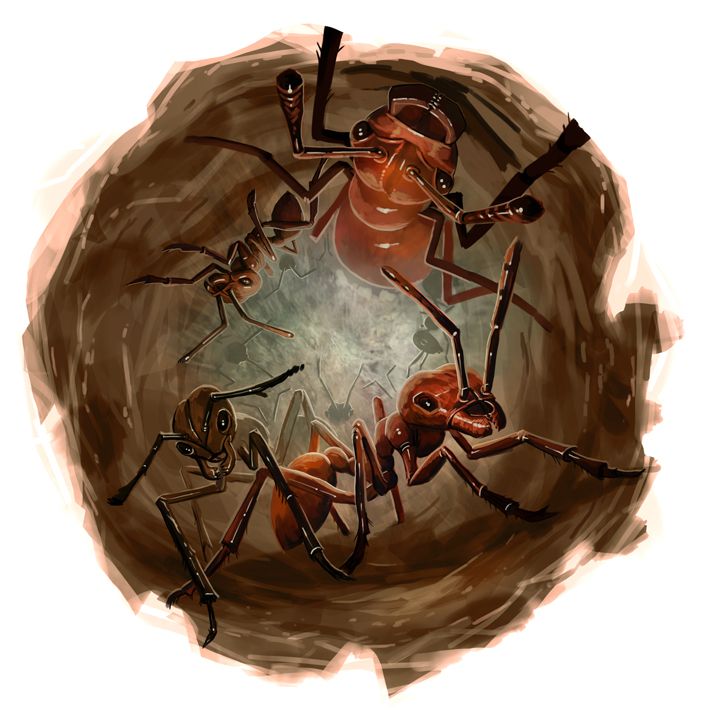Difference between revisions of "Carpenter Ant (giant)"
Tao alexis (talk | contribs) |
Tao alexis (talk | contribs) |
||
| Line 1: | Line 1: | ||
| − | [[File:ant-carpenter-image.jpg| | + | [[File:ant-carpenter-image.jpg|400px|left|Ant (giant carpenter)]] |
{{Bestiarychart | {{Bestiarychart | ||
| name = Ant (giant carpenter) | | name = Ant (giant carpenter) | ||
Revision as of 18:55, 14 February 2020
| Species | insect (camponotini gargantua) |
| No. Appearing | 7-16 & queen |
| Behaviour | nest |
| Range | taiga |
| Size | 6 ft. long |
| Weight | 480 lbs. |
| Intelligence | 0 |
| Armour Class | 3 |
| Hit Dice | 6 |
| Action Points | 5 |
| Max. Stride | {{{stride}}} |
| THAC0 | 15 |
| Hp/Die | 2d4 |
| Attack Forms | pincers |
| Damage | 2-12 |
| Special Attacks | none |
All initial encounters with giant carpenter ants will be with one individual that is foraging, found within 500 yards of the creature's nest. If it is approached within four hexes, the ant will attack, clicking as it does. This will be a signal for others of its kind to hear (the sound will be picked up over a distance of 150 yards).
Soon the party will hear clicking coming from multiple directions. After the first round of combat, an additional carpenter ant will appear every d4+1 rounds until all but four ants are engaged in the fight. The last four ants will remain in the nest to protect the queen.
Because of their lack of intelligence, carpenter ants will fight to the death. With each as large as a lion, they can aggressively overbear opponents very easily and will often attack using this method.
If the lair is entered, those guards will be encountered and an active queen. She cannot move quickly, but she will attack anyone within reach, to the death.
| Species | insect (camponotini gargantua) |
| No. Appearing | 1 |
| Behaviour | nest |
| Range | taiga |
| Size | 8 ft. 6 in. long |
| Weight | 1,300 lbs. |
| Intelligence | 0 |
| Armour Class | 4 |
| Hit Dice | 12 |
| Action Points | 2 |
| Max. Stride | {{{stride}}} |
| THAC0 | 12 |
| Hp/Die | d12 |
| Attack Forms | pincers |
| Damage | 3-18 |
| Special Attacks | none |
There is a fair chance of finding treasure in a carpenter ant nest. Instead of carving up their victims before returning to their next, carpenter ants will pick up whole bodies of humanoids. The carcasses, once destroyed, will leave behind metal goods such as armor, weapons and coin — though soft goods such as clothes, leather and wood will be destroyed by enzymes or the damp.
In northern climates, giant carpenter ants will be active only between the months of April and late September; the queens swarm in early September and for weeks the workers will cease to swarm but will attack as individuals.
See Bestiary.
